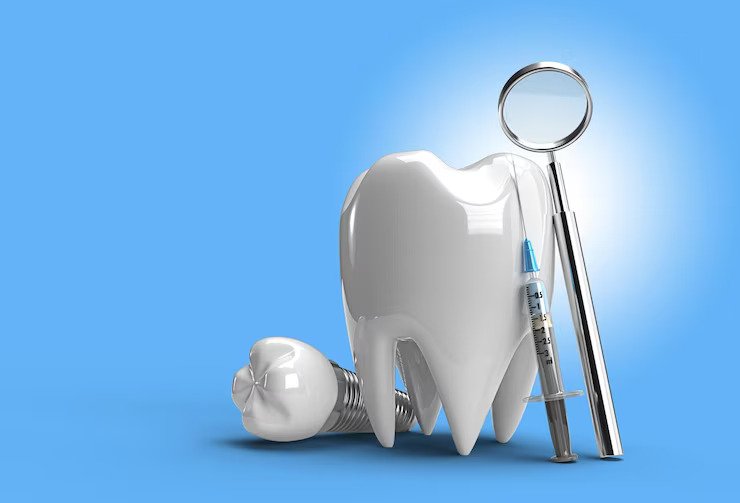Tooth Cap Vs. Crown: What’s The Difference And Which Is Best For You?
If you have a damaged or decayed tooth, your dentist may recommend a dental restoration to protect and restore it.
Two common options are tooth caps and dental crowns.
Although they may seem interchangeable, there are important differences between the two.
This article will explore the similarities and differences between tooth caps and dental crowns, their advantages and disadvantages, and which option may be best for you.
Contents
What is a tooth cap?
A tooth cap, or a dental cap, is a type of dental restoration used to protect and restore a damaged or decayed tooth.
It’s a hollow, tooth-shaped cap that fits over the damaged tooth to restore its shape, size, strength, and function.
Tooth caps are typically made of porcelain or ceramic but can also be made of gold, metal alloys, or resin
What is a dental crown?
A dental crown, also known as a tooth crown, is a type of dental restoration used to cover and protect a damaged or decayed tooth.
Like a tooth cap, it’s a tooth-shaped cap that fits over the tooth but covers the entire visible portion above the gumline.
Dental crowns are typically made of porcelain or ceramic but can also be made of gold, metal alloys, or resin.
Differences between tooth caps and dental crowns

Although tooth caps and dental crowns are similar in appearance and function, the two have some important differences.
Size
Tooth caps only cover the damaged portion of the tooth, while dental crowns cover the entire visible portion above the gum line.
Thickness
Tooth caps are generally thinner than dental crowns, as they only need to cover a small portion of the tooth.
Purpose
Tooth caps are primarily used to restore the appearance of a damaged tooth, while dental crowns are used for both restorative and cosmetic purposes.
Material
Tooth caps are typically made of porcelain or ceramic, while dental crowns can be made of a wider range of materials, including gold, metal alloys, or resin.
Procedure
Tooth caps require less tooth structure to be removed than dental crowns, so they are generally less invasive and require less preparation.
Advantages and disadvantages of tooth caps
Advantages
- Less invasive than dental crowns
- Preserve more of the natural tooth structure
- It can be made to match the color of your natural teeth
- Cost less than dental crowns
Disadvantages
- Not as strong or durable as dental crowns
- It may need to be replaced more frequently
- It can’t be used for extensive tooth damage or decay
Advantages and disadvantages of dental crowns
Advantages
- Strong and durable
- It can be used for extensive tooth damage or decay
- It can be made of a wide range of materials
- Long-lasting, with a lifespan of up to 15 years
Disadvantages
- More invasive than tooth caps
- Require more tooth structure to be removed
- It may not match the color of your natural teeth
- Cost more than tooth caps
Which option is best for you?
The choice between a tooth cap and a dental crown depends on the extent of damage or decay to the tooth, the location of the tooth in the mouth, and your preferences.
Your dentist will evaluate your situation and recommend the best option for you.
If you have minor damage or decay to a tooth, a tooth cap may be sufficient to restore its appearance and function.
Tooth caps are less invasive and cost less than dental crowns.
They’re also a good choice if the damaged tooth is less visible, such as a molar.
If you have extensive damage or decay to a tooth, a dental crown may be necessary to restore its strength and function.
Dental crowns are stronger and more durable than tooth caps and can withstand greater chewing forces.
They’re also a good choice if the damaged tooth is visible, such as a front tooth, as they can match the color of your natural teeth.
The procedure for tooth caps and dental crowns

The procedure for getting a tooth cap or dental crown involves several steps:
1. Examination and preparation: Your dentist will examine your tooth and take X-rays to evaluate the extent of damage or decay. They will then remove any decay and shape the tooth to make room for the cap or crown.
2. Impression: Your dentist will make an impression of the prepared tooth and send it to a dental laboratory to create the cap or crown.
3. Temporary restoration: While you wait for the permanent restoration to be created, your dentist will place a temporary cap or crown over the tooth to protect it.
4. Placement: Once the permanent restoration is ready, your dentist will remove the temporary restoration and cement the cap or crown onto the prepared tooth.
How to care for tooth caps and dental crowns
Tooth caps and dental crowns require the same level of care as your natural teeth.
Here are some tips to keep them in good condition:
- Brush and floss twice a day to remove plaque and food particles.
- Avoid hard or sticky foods that could damage the restoration.
- Avoid using your teeth to open packages or bite into hard objects.
- Visit your dentist regularly for checkups and cleanings.
Conclusion
Both tooth caps and dental crowns effectively restore damaged or decayed teeth.
Tooth caps are less invasive and cost less, but may not be as strong or durable as dental crowns.
Dental crowns are stronger and more durable but require more preparation and can be more expensive.
Choosing between a tooth cap and a dental crown will depend on your specific needs and preferences and should be discussed with your dentist.
Read Also:
- Root Canal Cracked Tooth – What To Do? Is It Treatable? [Dental Guide]
- Battling Tooth Cavity and Decay – What Are the Effective Options?
- 7 Things to Think About When Getting Tooth Aligners



